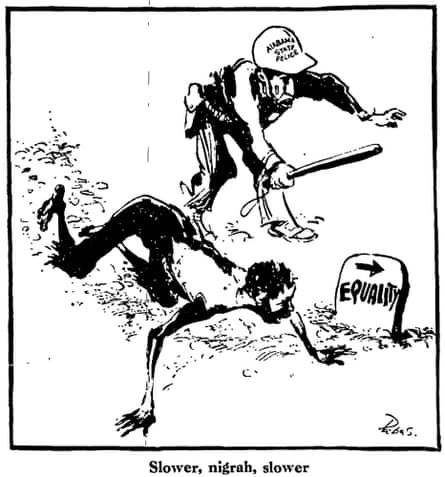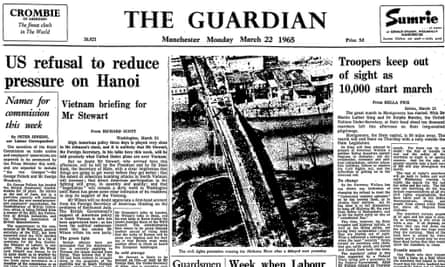The 1964 Civil Rights Act outlawed discrimination based on race in the United States, but while legally black people were allowed the vote, some southern state officials obstructed their efforts to register. Local groups in Selma had already been agitating for change, but when Dr Martin Luther King chose it as the testing ground for his black voter registration campaign in early 1965, it drew national attention to the Alabama town.

The pivotal moment came on Sunday 7 March, as demonstrators began a march from Selma to the state capitol, Montgomery. As the marchers crossed Edmund Pettus Bridge on their route out of Selma, they were met by a posse of state troopers armed with nightsticks and wearing gas masks. A warning was given to disband; Rev Hosea Williams, leading the march, tried to speak but was told there was nothing to discuss. Then the troopers moved in. The marchers were chased, beaten, tear gas was thrown and officers on horseback charged the crowd.
The footage that played on televisions around the world and the front pages bearing witness to vicious beatings galvanised support. The Guardian described the ‘dangerous situation’ that had developed in Selma, and ran a powerful image by cartoonist Bill Papas.

An editorial called the violence perpetrated against passive protesters ‘a major blemish on the face of American society’ and ‘marvelled at the courage of Luther King and his non-violent cohorts’.

In the aftermath of Bloody Sunday, King himself led a symbolic march across the bridge once again. While demonstrators were more determined than ever to proceed, federal protection was needed if they were to make it to Montgomery safely. Stopped by police, the marchers kneeled and prayed, then turned around and retreated back into Selma.
Belated support from President Johnson came on 13 March, when he announced in a televised statement that a new bill for voter rights would be pushed through Congress. Guardian correspondent Jonathan Steele filed a report from Selma, ‘a community that is on fire.’ Four days later, Judge Frank Johnson overruled Alabama governor George Wallace and ordered him to allow the march.

When the freedom march finally set off, on 21 March, thousands had joined the ranks (spurred on by the murder of white minister James Reeb, a civil rights activist who had come to Selma after Bloody Sunday). Martin Luther King led alongside religious leaders from all faiths and denominations: priests and reverends, nuns and rabbis, black and white marched together.

By the time they reached the capitol four days later the numbers had swelled to over 30,000. Hella Pick wrote a powerful opinion piece about her own experiences as a reporter travelling with the marchers:
There were, above all, those clusters of Negroes, waiting in the muddy unpaved streets of the Negro quarters of Montgomery to watch the march come by. At first they were impassive; then they grew incredulous as they saw the long, long crocodile of people; they would burst out into applause when they saw Martin Luther King; laugh when they recognised friends, hesitate, overcome their fear, and join the marchers themselves... and the marchers grew and grew until they reached that broad avenue and marched right up to the Capitol under the nose of Governor Wallace.
The Guardian’s editorial on 26 March 1965 declared that, while there was much still to be done, ‘the message from the march to Montgomery reads full of hope.’


Comments (…)
Sign in or create your Guardian account to join the discussion